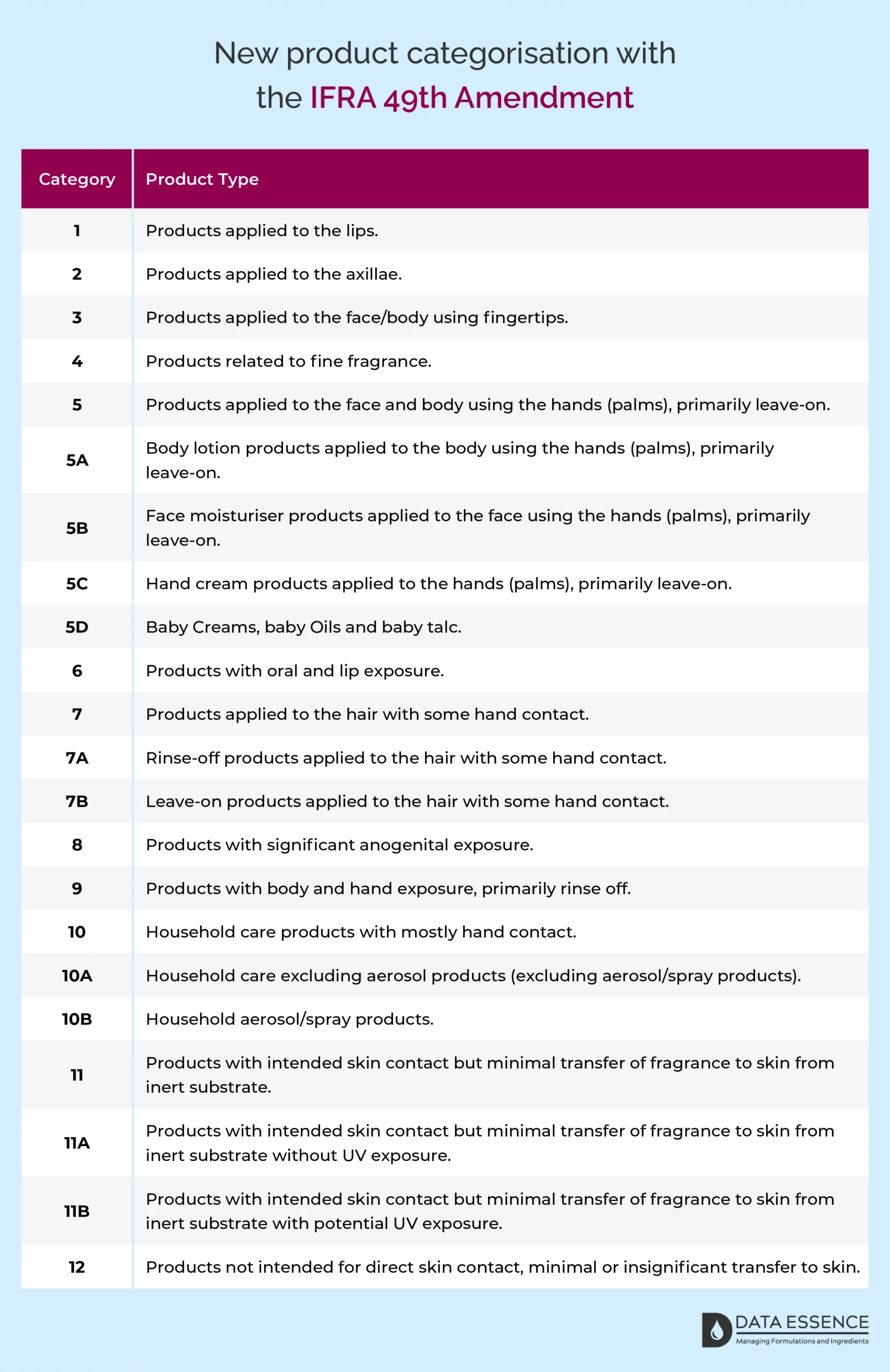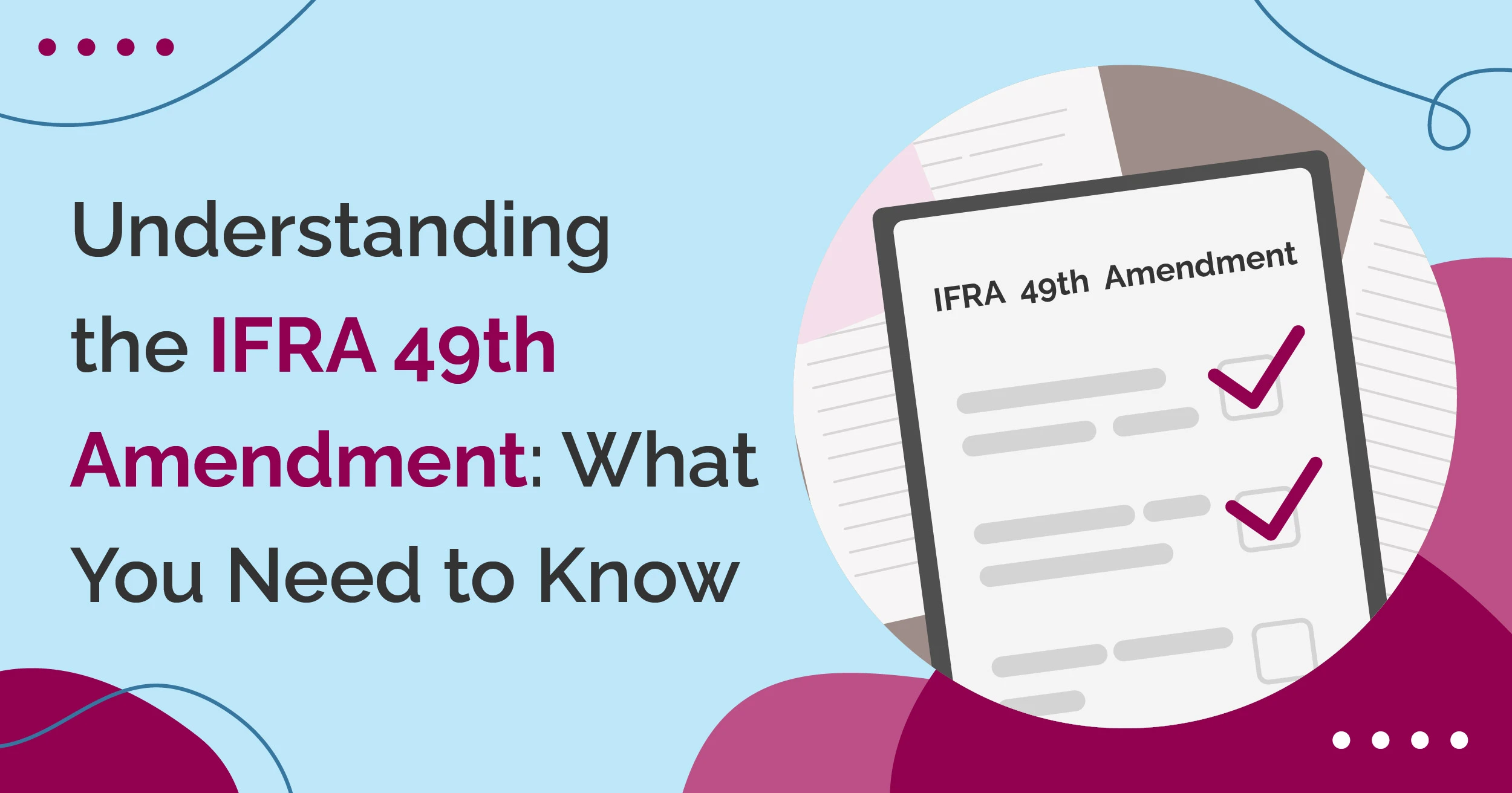Understanding the IFRA Standards
IFRA Standards impact the formulation of perfumes, colognes, and other scented products. They serve as a comprehensive blueprint, guiding perfumers and product developers in selecting and using fragrance ingredients that meet stringent safety and quality criteria. These standards dictate the maximum allowable concentrations of specific fragrance ingredients, ensuring they do not pose health risks to consumers. Perfumers must carefully adhere to these guidelines during the formulation process, striking a delicate balance between creativity and compliance. This meticulous approach guarantees that the scented products we adore smell delightful and are safe to wear or use, meeting the highest industry standards for consumer protection.
The purpose of the IFRA Amendments
Amendments to IFRA Standards directly result from two dynamic forces: scientific advancements and regulatory changes. As scientific research continues to uncover new insights into the safety of fragrance ingredients, amendments are made to incorporate this knowledge into the standards. These advancements help identify potential risks and allow for more precise regulations. Additionally, regulatory authorities worldwide periodically update their guidelines and requirements. IFRA, as a global body, must align its standards with these changing regulations to ensure international compliance and consistency. In essence, amendments reflect the industry’s unwavering commitment to staying at the forefront of scientific understanding and adapting to evolving regulatory landscapes, all in pursuing safer and higher-quality fragrances for consumers.
Need help staying compliant with IFRA Standards?
An overview of the IFRA 49th Amendment
The IFRA 49th Amendment encompasses several key components that warrant attention. It provides valuable guidance for applying IFRA Standards, ensuring a more streamlined and consistent approach across the industry. It also revisits the IFRA Standards, including Annex I and Annex II. These updates reflect a renewed emphasis on safety and quality within the fragrance industry.
Perhaps the most noteworthy aspect of this amendment is the introduction of an innovative scientific approach known as Quantitative Risk Assessment for fragrance ingredients, or QRA2. This advanced methodology merges assessment for skin sensitisation, phototoxicity, and systemic toxicity into a unified framework, resulting in a fundamental shift in the IFRA categorisation system. The 49th Amendment has replaced the previous “IFRA Classes” terminology with a new categorisation system based on “IFRA Categories”.
This Amendment was more than just an update; it signified a progressive step forward in ensuring the safety and quality of fragrance products. It underscores the industry’s commitment to scientific rigour, regulatory compliance, and consumer well-being.
The scope of the IFRA 49th Amendment
- Guidance on the use of IFRA Standards: This guidance provided comprehensive clarity on the interpretation of IFRA Standards and the methodology used to determine their upper concentration levels. It amalgamated key resources, including the introduction to the Standards, the IFRA-RIFM QRA information booklet, and the Standard Operating Procedure for implementing Amendments. The guidance also included a summary of the procedure for setting IFRA Standards, the risk assessment process for fragrance ingredients, and frequently asked questions about the application of the Standards.
- The IFRA Standards under the scope of the 49th Amendment: This category witnessed a substantial overhaul, comprising:
- 25 New Restriction Standards
- 88 Revised Restriction Standards
- 12 Restriction Standards with a revised format
- 3 Revised Specification Standards
- 3 Specification Standards with a revised format
- 10 Revised Prohibition Standards
- 2 Revised Prohibition/Specification Standards
- 2 Prohibition/Specification Standards with a revised format
- 24 Prohibited Standards had the format updated to reflect toxicological endpoints of concern
- 49 Standards that remained unchanged
- 2 Standards that were deleted, with their content transferred to other standards
- Annex I of the IFRA Standards: This annexe, a non-exhaustive indicative list of typical natural presence for fragrance ingredients under the scope of an IFRA Standard, was expanded to include the natural contributions of ingredients with new IFRA Standards introduced in the 49th Amendment. Additionally, the information within this annexe from previous Amendments was reviewed and updated. Natural contributions of ingredients prohibited for use were also added for informational purposes.
- Annex II of the IFRA Standards: While the 49th Amendment brought significant changes to other areas, Annex II, containing information regarding potential restrictions on Schiff bases attributed to each Standard, remained unchanged.
This amendment introduced new methodologies, notably QRA2 and aggregate exposure models for systemic toxicity, which led to the creation of new IFRA Standard Categories. These changes highlighted that the impact of a Standard on a fragrance mixture could result not only from changes in upper concentration levels but also from shifts in product types moving between categories. For example, the Amendment impacted product categories like Baby wipes related to phototoxicity-driven Standards, which moved from a formerly unrestricted category to one with specified concentration limits. These alterations, while far-reaching, may affect a limited number of fragrance mixtures but ultimately reinforce the industry’s commitment to safety and precision.
The changes ushered in by the 49th Amendment to the IFRA Standards profoundly impacted fragrance formulations and the industry as a whole. These modifications, driven by cutting-edge methodologies like QRA2 and systemic toxicity assessments, prompted a comprehensive re-evaluation of fragrance ingredient safety. Perfumers and manufacturers faced the challenge of reformulating existing fragrances and adjusting to new upper concentration limits, all while ensuring that the essence and quality of their creations remained intact. Furthermore, introducing new IFRA Standard Categories and reshuffling product types between categories added a layer of complexity to the formulation process. These changes, although substantial, underscore the industry’s unwavering commitment to consumer safety and the pursuit of fragrances that not only captivate the senses but also meet the highest standards of safety and quality. It was a testament to the industry’s adaptability and dedication to staying at the forefront of fragrance innovation while prioritising the well-being of consumers.
Need help staying compliant with IFRA Standards?
Revised Certificate of Conformity in light of the IFRA 49th Amendment
Traditionally, IFRA Classes were utilised to define the range of consumer products in which a fragrance mixture could be employed at the upper concentration level specified by the Certificate of Conformity. These Classes took into account various factors, including systemic toxicity and phototoxicity considerations. However, the advent of the 49th Amendment brought forth a significant shift in the form of IFRA Standard Categories, which now encompass skin sensitisation, systemic toxicity, and phototoxicity considerations. Consequently, the ‘Classes’ terminology has become obsolete as it aligns seamlessly with the IFRA Standard Categories, marking a crucial evolution in the certification process.
New product categorisation with the IFRA 49th Amendment
These categories in the 49th Amendment are summarised in the table below:

Industry response to the IFRA 49th Amendment
Additionally, introducing the new IFRA Product Categorisation required a thorough re-evaluation of product types and formulations. These adjustments were significant, but they underscored the industry’s unwavering commitment to the safety and well-being of consumers. The fragrance industry’s collective response showcased its adaptability, resilience, and determination to deliver fragrances that captivate the senses and adhere to the highest standards of safety and quality.
Conclusion
Need help staying compliant with IFRA Standards?

